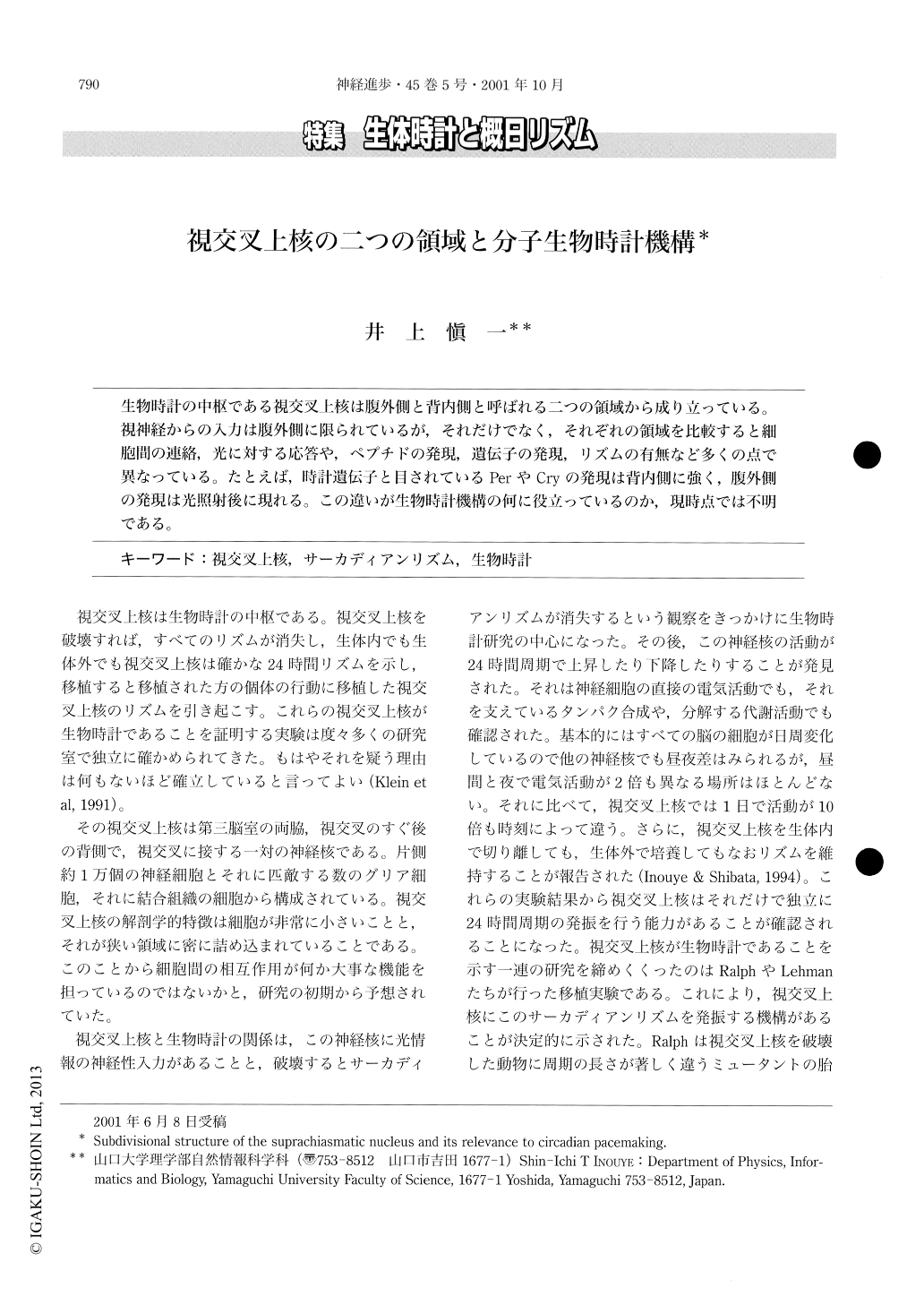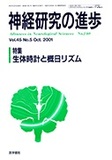Japanese
English
- 有料閲覧
- Abstract 文献概要
- 1ページ目 Look Inside
生物時計の中枢である視交叉上核は腹外側と背内側と呼ばれる二つの領域から成り立っている。視神経からの入力は腹外側に限られているが,それだけでなく,それぞれの領域を比較すると細胞間の連絡,光に対する応答や,ペプチドの発現,遺伝子の発現,リズムの有無など多くの点で異なっている。たとえば,時計遺伝子と日されているPerやCryの発現は背内側に強く,腹外側の発現は光照射後に現れる。この違いが生物時計機構の何に役立っているのか,現時点では不明である。
Morphologically, and histochemically, the suprachiasmatic nucleus of the hypothalamus, the site of the circadian pacemaker in mammals, can be divided into two subdivisions, ventrolateral and dorsomedial parts. Both of the main optical fibers, the retinohypothalamic and geniculohypothalamic tracts innervate only the ventrolateral subdi-vision. Expression of c-fos and other immediate early genes after light exposure are solely observed in the ventro-lateral subdivision of the suprachiasmatic nucleus. Distribution of peptide synthesizing neurons is also different in these two subdivisions. Vasopressin is found mainly in the dorsomedial part, while VIP in the ventrolateral part. These peptides are distinct in the circadian profiles of their mRNA and contents. Vasopressin shows an endoge-nous rhythm both under light/dark and constant dark conditions. VIP exhibits rhythms only under light/dark con-ditons and showed the level according to environmental light. Some characteristics of clock gene expression are different in these subdivisions. Period and Cry genes are expressed more strongly in the dorsomedial subdivision, whereas light exposure induces their expression in the ventrolateral subdivision.
Although their biological significance has been speculated for many years, it is not known how and why these structural complexicity is relevant to the circadian pacemaking function of the suprachiasmatic nucleus.

Copyright © 2001, Igaku-Shoin Ltd. All rights reserved.


